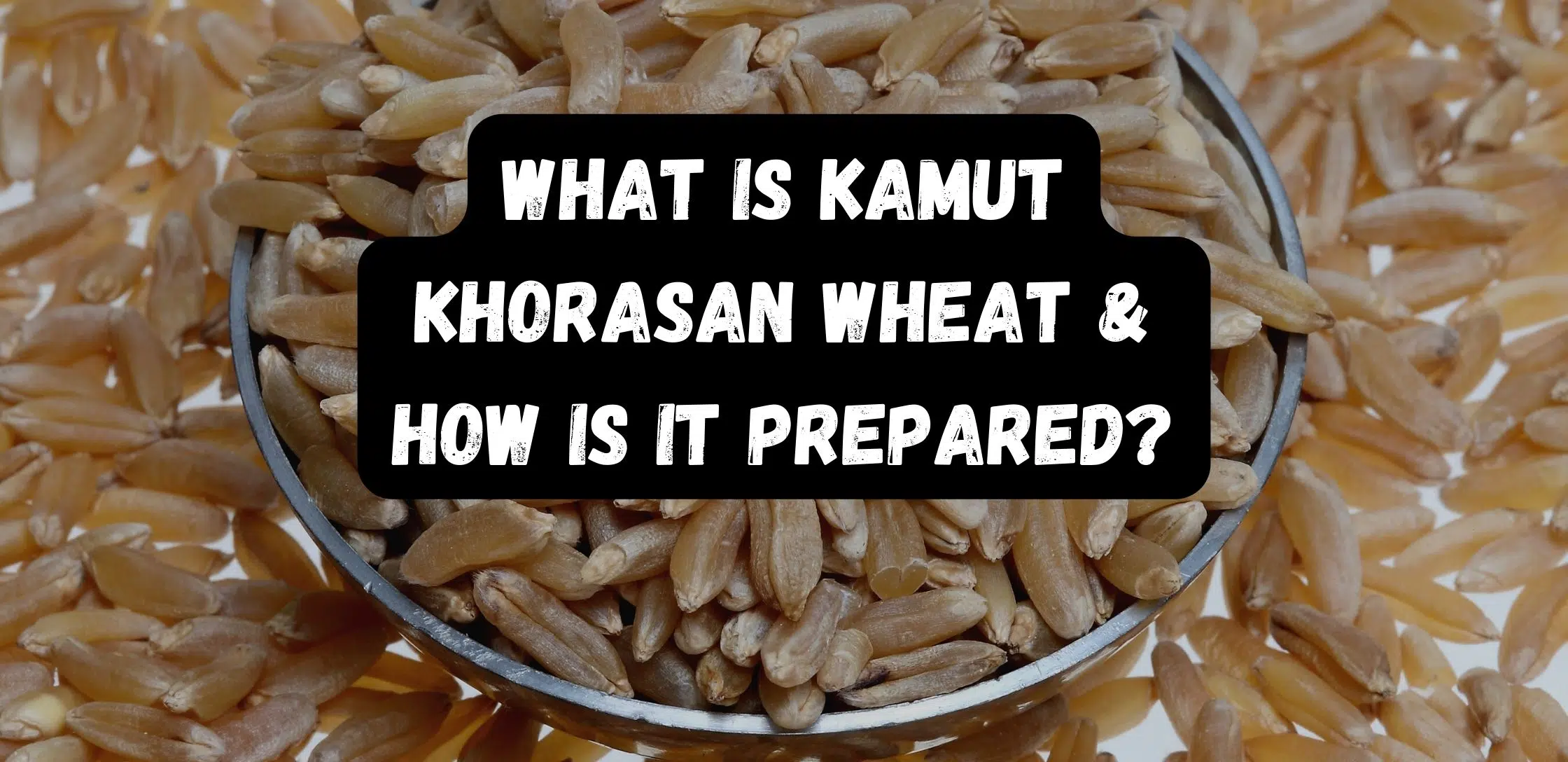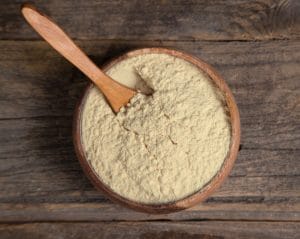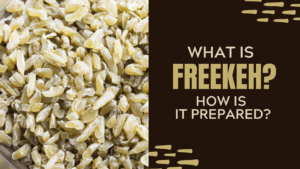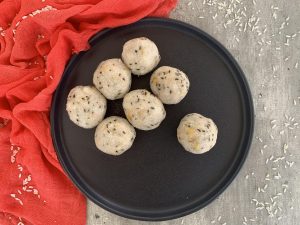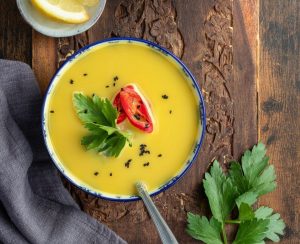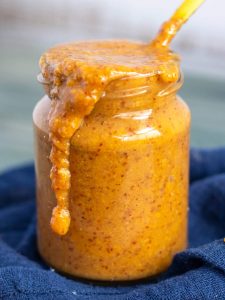What Is Kamut Khorasan Wheat & How Is It Prepared?
Important Note: When you buy through our links, we may earn a commission. As an Amazon Associate we earn from qualifying purchases. Content, pricing, offers and availability are subject to change at any time - more info.
The revival of ancient grains is a culinary trend that has seen quinoa, amaranth, millet, and farro become staples in many health-conscious households. Do you know your freekeh from your fonio and your bulgar from your barley? The latest grain to hit the shelves is Kamut Khorasan. What is Kamut Khorasan wheat, and how is it prepared?
Kamut Khorasan wheat is an ancient Middle Eastern grain now grown in the US. The nutty, buttery Khorasan kernels can be ground into flour, simmered, and served as a side dish or incorporated into a salad or pilaf. Khorasan is highly nutritious and contains more protein than quinoa.
You’ve probably added quinoa to your carb rotation, especially if you’re tired of rice and potatoes. Other ancient grains are also worth investigating, as they’re nutritious, versatile, and tasty. Have you tried Kamut Khorasan wheat?
What Is Kamut Khorasan Wheat?
Kamut Khorasan (Triticum turgidum) is a variety of wheat related to durum, also known as King Tut’s wheat, prophet’s wheat, or camel’s tooth wheat. Let’s look at what this grain tastes like, where it comes from, where it grows, and how you can prepare it at home.
Kamut Khorasan Wheat: An Heirloom Grain
Khorasan wheat is an heirloom or ancient grain which has remained unchanged over hundreds of years: the wheat has never been hybridized or genetically modified.
Heirloom grains were once widespread but have been neglected and ignored in modern times in favor of wheat better suited to bread-making. Farmers are rediscovering wheat varieties like Khorasan and spelt and making them available once more.
Kamut Khorasan wheat’s kernels or “berries” are three times larger than the average wheat kernels and have a distinctive humpbacked shape and golden color. The term “berries” has nothing to do with fruit: wheat berries are whole kernels, including the wholesome bran and wheat germ.
Like other ancient grains, Khorasan is highly nutritious, easily digested, and simple to cook. With a nutty flavor and toothsome texture, Khorasan is a delicious alternative to farro, einkorn, and barley.
Kamut is an American brand of Khorasan wheat. The company has committed to producing the grain organically and never modifying it. You’ll often find the grain sold as Kamut Khorasan and referred to as Kamut.
How Does Kamut Khorasan Wheat Taste?
As a form of wheat, Khorasan tastes similar to whole-grain wheat but with a richer, nuttier flavor and chewier texture, as the grains are larger. You can eat the cooked berries hot or cold.
Khorasan flour, which is a beautiful golden shade, makes tender, light brown bread with a hint of sweetness from the grain’s natural sugars. The texture of the bread falls between regular and wholewheat bread. The flour is ideal for cookies, pizza, and muffins.
Being a distant relative of durum wheat, Khorasan makes excellent pasta, which has a natural al dente mouthfeel and mild flavor.
Is Kamut Khorasan Wheat Nutritious?
Kamut Khorasan wheat is more nutritious than regular wheat and has many health benefits.
This heirloom product has the highest protein levels of all grains, offering 9.8 g of protein per serving. (Compare brown rice, which has 4.5 g, and quinoa with 8 g of protein per serving.)
Khorasan also packs a vitamin and mineral punch. A one-cup serving of Khorasan provides much of your vitamin and mineral RDA (required daily allowance):
- 100% of your selenium
- 77% of the manganese you need,
- 40% of your copper,
- 33% of your daily vitamin B3 needs
- 28% of your RDA for zinc
- 20% of phosphorus
- 19.6% of magnesium
- 13.5% of vitamin B1
- 10% of your daily iron
- 2% of the required calcium.
The grain contains high levels of antioxidants, especially polyphenols and carotenoids (which provide the yellow coloration, like carrots), and is rich in fiber.
Consuming Khorasan regularly helps to:
- maintain your cognitive function, metabolism, and weight
- reduce your blood pressure, blood sugar, and cholesterol levels
- decrease inflammation
- protect against degenerative diseases like diabetes.
People with gluten intolerance and sensitivity can sometimes digest Khorasan more readily than modern wheat. However, Khorasan is still a form of wheat and contains gluten, so those with celiac disease should avoid it.
Where Does Kamut Khorasan Wheat Come From?
The names for Kamut Khorasan wheat tell us about the origins of this ancient wheat: the Mediterranean, Middle East, and Levant area. Today, most Khorasan wheat is grown on the plains of the US and Canada.
Camel’s Tooth Wheat
The Khorasan grains or berries are said to be the same shape and color as the tooth of a camel. Camels have been used for centuries as a form of transport in the Middle East and North Africa.
Today, Khorasan is grown in Iran as camel feed.
Propet’s Wheat
The Biblical story of the flood tells of the prophet Noah who saves his family and the world’s animals in an ark. Legend has it that Noah also took Khorasan grains onto the ark.
Khorasan Wheat
Experts believe that Khorasan wheat was first grown in an area called Khorasan.
Khorasan is the historical name of a fertile region that covered northeastern Iran, southern Turkmenistan, and northern Afghanistan. Many believe that this Fertile Crescent is where farming developed. Today there is a province called Khorasan in Iran.
Khorasan continues to be grown on a small scale across the Middle East.
Kamut Khorasan
Kamut is a brand name in the United States. In 1990 Bob and Mack Quinn trademarked a strain of Khorasan wheat to protect it from being modified and to guarantee that Kamut Khorasan would be grown organically.
Kamut means wheat in the ancient language of Egypt. This name comes from the legend that grains of Khorasan wheat were found in Pharoah Tutankhamen’s tomb in Egypt.
In 1949, American Earl Dedan was given 36 Khorasan grains in Portugal by a man claiming that the seeds came from Tutankhamen’s tomb. Dedan’s father planted the seeds on their Montana farm, calling the grain “King Tut’s Wheat.”
The wheat became a local novelty, and the Dedans shared this new strain with fellow farmers. Clinton Stranahan handed out samples of the seeds at the 1964 Montana County Fair, where Bob Quinn, aged 16, noticed the unusually large grains.
In 1977, Bob Quinn, by then a biochemist, decided to plant Khorasan wheat on the family farm in Montana, hoping to create a snack like Corn Nuts. The grain didn’t become a snack, but the Quinns realized Khorasan’s culinary value and nutritional benefits and decided to start farming it organically in the 1980s.
In 1990, the Quinns trademarked their strain of wheat as Kamut Khorasan. A trademark condition is that any Khorasan branded Kamut has to be grown organically and sustainably. Today, Kamut Khorasan wheat is grown primarily on certified organic farms in the United States.
Kamut Khorasan has become a popular product in the American and European health food market, in the form of whole grains and flour. This versatile ingredient is also used in manufacturing food and beverages, including pasta, pizza, cereal, snacks, beer, cereal, and bread.
How Do You Prepare Kamut Khorasan Wheat?
How you prepare Khorasan wheat depends on the form in which you buy it. Khorasan comes in two primary forms:
- milled flour
- whole Khorasan berries
How To Use Kamut Khorasan Wheat Flour
Use Khorasan flour as a substitute for regular and wholewheat flour. Khorasan flour will add a subtle nuttiness and sweetness to your bakes. Try using Khorasan flour for:
- bread and rolls
- pretzels
- pizza
- flatbreads and pita bread
- cookies
- pancakes
- scones
- muffins
- cinnamon rolls
- roux or white sauce
- homemade pasta
- breading for fried fish or chicken
How To Prepare Kamut Khorasan Wheat Grains
Khorasan whole wheat kernels or berries are easy to prepare, cook slowly, and hold their shape well. One cup of uncooked grains will produce two and a half cups of cooked grains.
Follow these steps to prepare the grains on the stovetop:
- Soak one cup of grains in plenty of water overnight. Soaking decreases cooking time, but you can cook it without soaking if necessary.
- Drain the grains thoroughly, discarding the soaking water.
- Put the soaked grain in a large pot with three cups of salted water.
- Bring to the boil.
- Reduce the heat to medium.
- Partially cover the pot and simmer the grains for 30 to 40 minutes until tender. (Unsoaked grain will take 60 to 90 minutes.)
- Add water as necessary, especially if you didn’t soak the grains. Soaked Khorasan does not always absorb all the cooking water.
- Cooked Khorasan wheat is soft but has a firm texture and nutty flavor.
You can also prepare Khorasan grains in the pressure cooker:
- Place one cup of grains in your pressure cooker with three cups of water.
- Set the pressure cooker to the maximum.
- Cook the grains for 20 to 25 minutes. (You will need to cook unsoaked grains for 40 minutes.)
- Let the steam reduce naturally before opening the pressure cooker.
- Drain the Khorasan wheat.
Khorasan wheat also works well if cooked in a rice cooker:
- Put one cup of Khorasan wheat grains and three cups of water or broth in the cooker.
- Switch the setting to brown rice.
- Cook for 45 to 60 minutes. (The rice cooker will beep when the wheat is ready.)
To cook Khorasan berries in the microwave, do the following:
- Place a cup of Khorasan with four cups of water in a large covered casserole.
- Microwave on high for 10 minutes.
- Microwave on medium for five minutes.
- Let the pot of wheat stand for an hour.
- Stir in ½ teaspoon salt.
- Microwave on high for 10 minutes.
- Microwave on medium-low for 45 minutes to an hour.
Meal Ideas For Kamut Khorasan Wheat
You can eat cooked Khorasan hot or cold, just as you would use brown rice, barley, wheat berries, corn, spelt, or buckwheat. Here are some ideas:
- Add cooked Khorasan to soups and stews. Like barley, Khorasan grains don’t go mushy or boil away.
- Make a salad using Khorasan instead of brown rice. Khorasan makes a great tabbouleh instead of bulgar wheat.
- Use Khorasan instead of rice as a side dish with roast vegetables.
- Make a pilaf or casserole using Khorasan grains.
- Stuff peppers or halved butternuts with Khorasan and veggies.
- Make a risotto with Khorasan instead of arborio rice.
- Use Khorasan instead of breadcrumbs, rice, or couscous in a stuffing or dressing with onions, cinnamon, and dried fruit.
How To Freeze Kamut Khorasan Wheat
Khorasan wheat freezes well and retains its shape once thawed. Follow these steps:
- Cook the Khorasan on the stovetop or in a pressure cooker.
- Drain the grains.
- Allow the grains to cool thoroughly.
- Portion the grains into freezer-proof containers or plastic bags. It’s easier to grab a portion than defrost too much at a time. (Two cups is enough for a family of two adults and two children.)
- Label the containers with the date and contents.
- You can freeze cooked Khorasan for up to a year.
How To Use Frozen Kamut Khorasan Wheat
If you want to use your frozen Khorasan, it is easy to prepare:
- Add frozen grains directly to a soup, stew, or casserole and heat through.
- Defrost Khorasan in the microwave by putting it in a bowl with two teaspoons of water.
- You can also defrost Khorasan in the fridge overnight.
Where Can You Buy Kamut Khorasan Wheat?
Kamut Khorasan wheat is widely available at health stores and online. Look out for the Kamut Khorasan brand in these products:
- Eden Organic makes Kamut Khorasan pasta in all shapes and sizes.
- Bob’s Red Mill sells Kamut Khorasan in the form of flour.
- Grains-of-Discovery is the label for whole Kamut Khorasan grains.
- Nature’s Path has created a puffed Khorasan cereal.
- Trader Joe’s bakes an Ancient Kamut and Spelt Bread.
- Shiloh Farms makes Khorasan flakes to add to granola or as a topping for a fruit crumble.
The Lowdown On Kamut Khorasan Wheat
Kamut Khorasan wheat is an heirloom grain, an ancient grain that has been revived and planted widely. Originally from the Middle East, Kamut Khorasan is now grown mainly in Montana in the United States.
Adding this healthy grain to your family’s diet will benefit everyone. The nutritious and tasty grains of Kamut Khorasan make a welcome change from rice or corn and are versatile enough to use in soups, stews, salads, and risotto.
